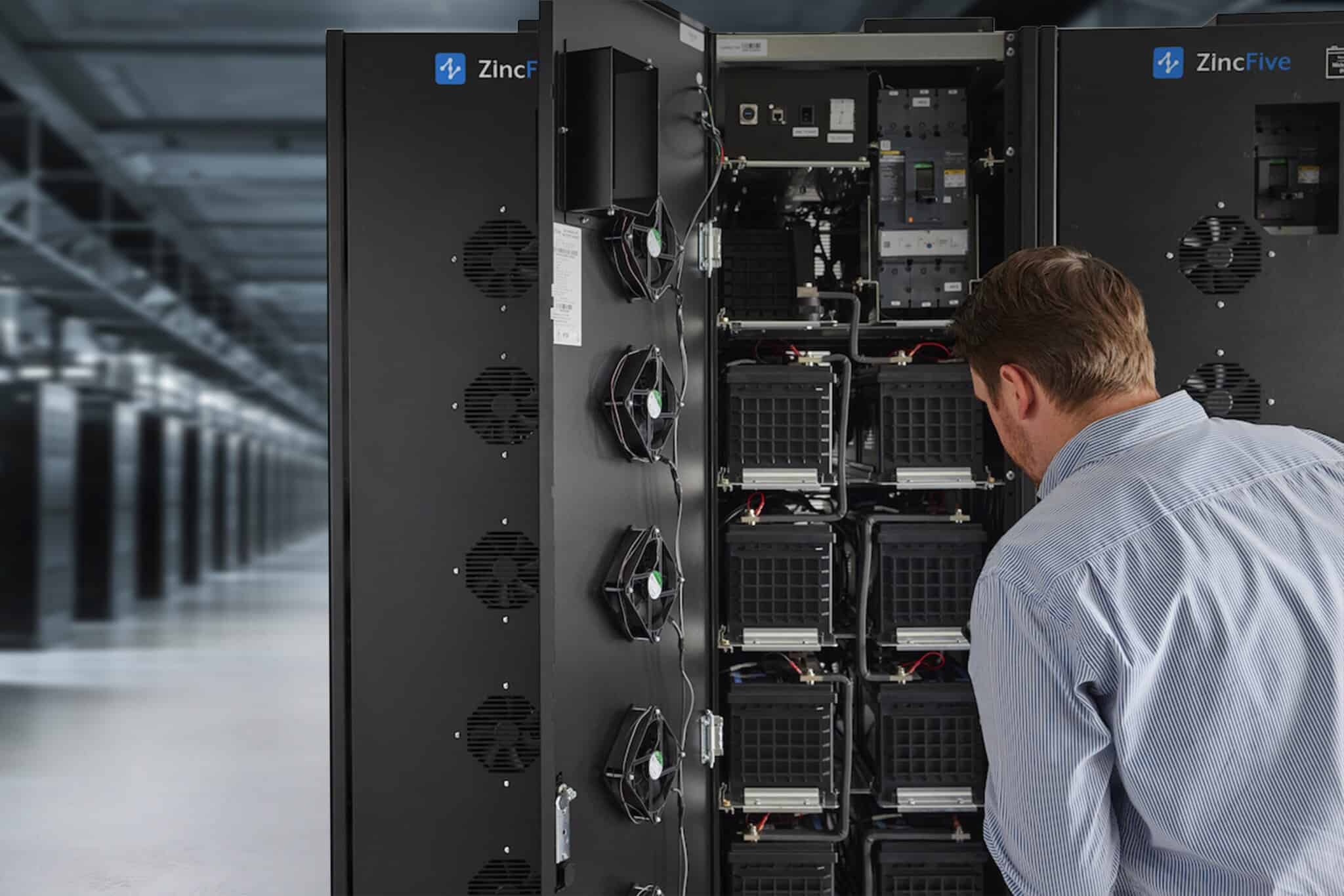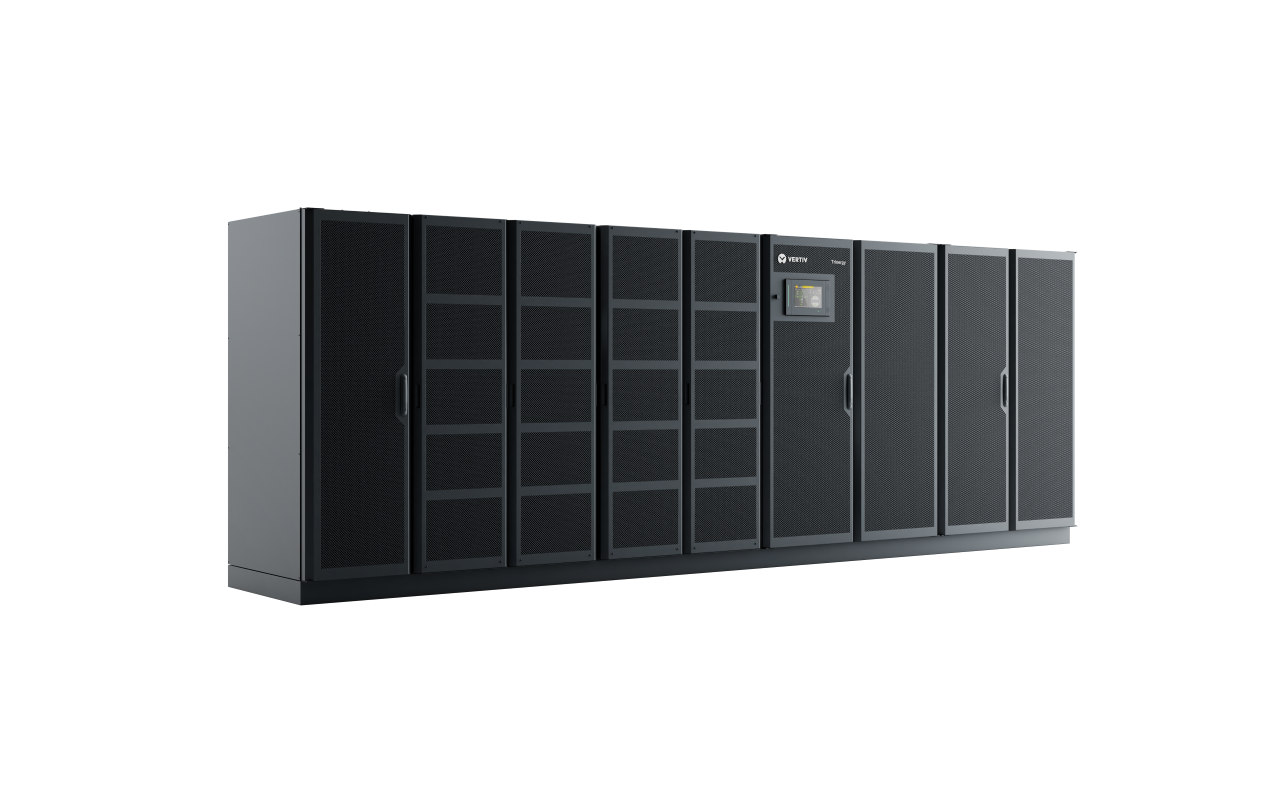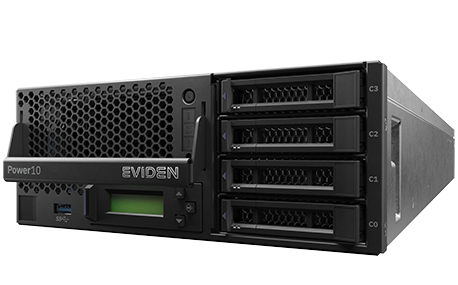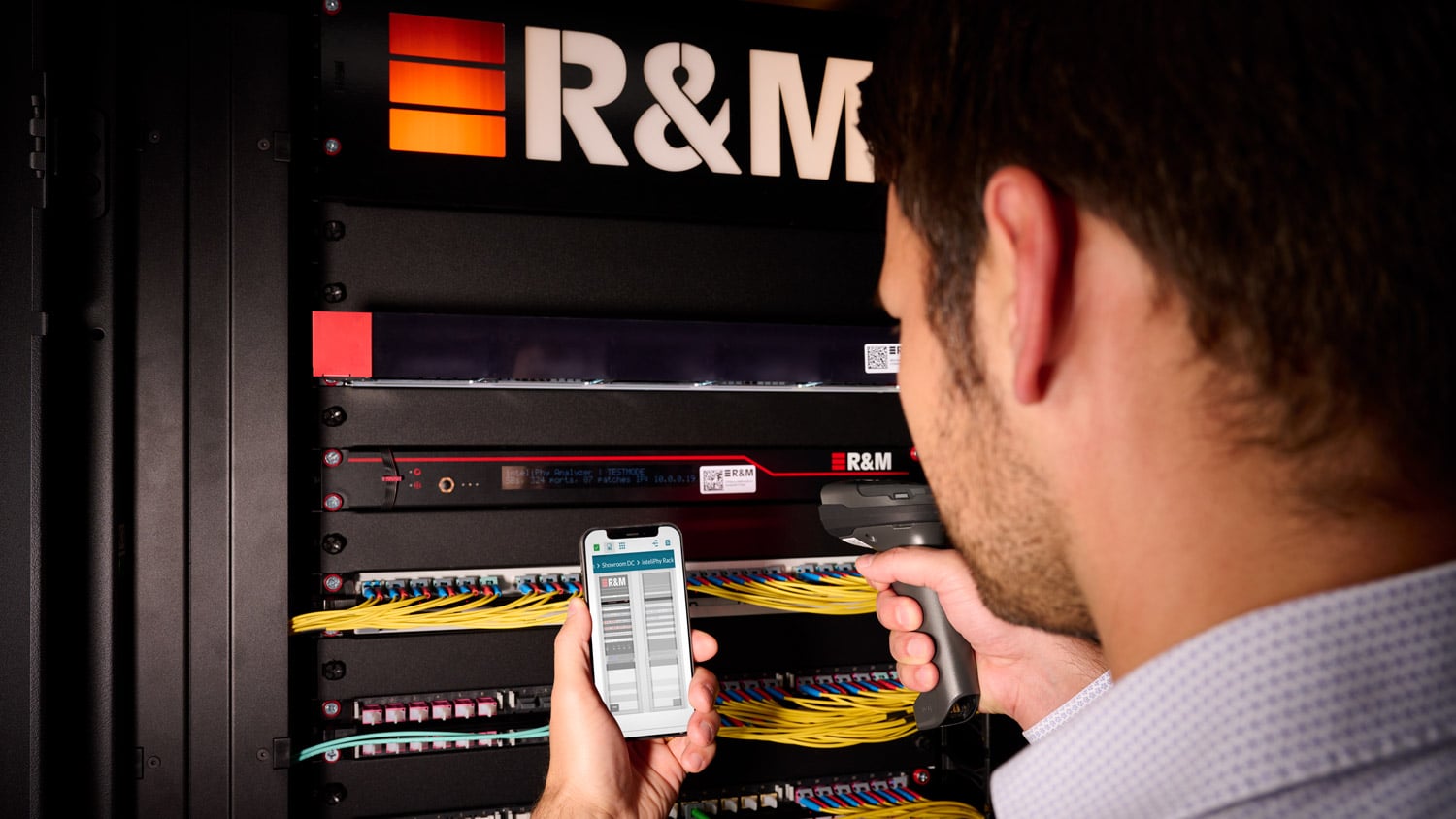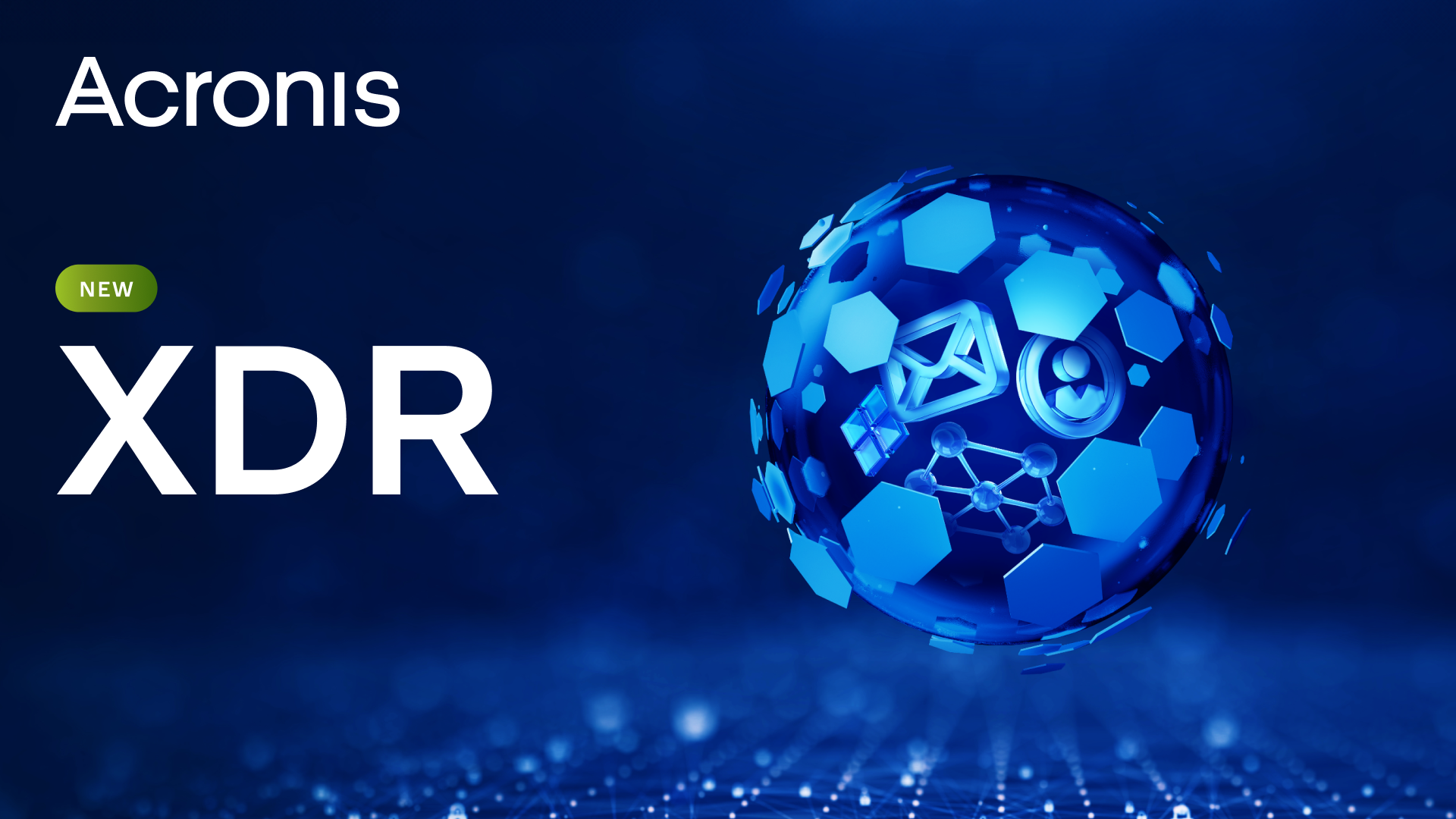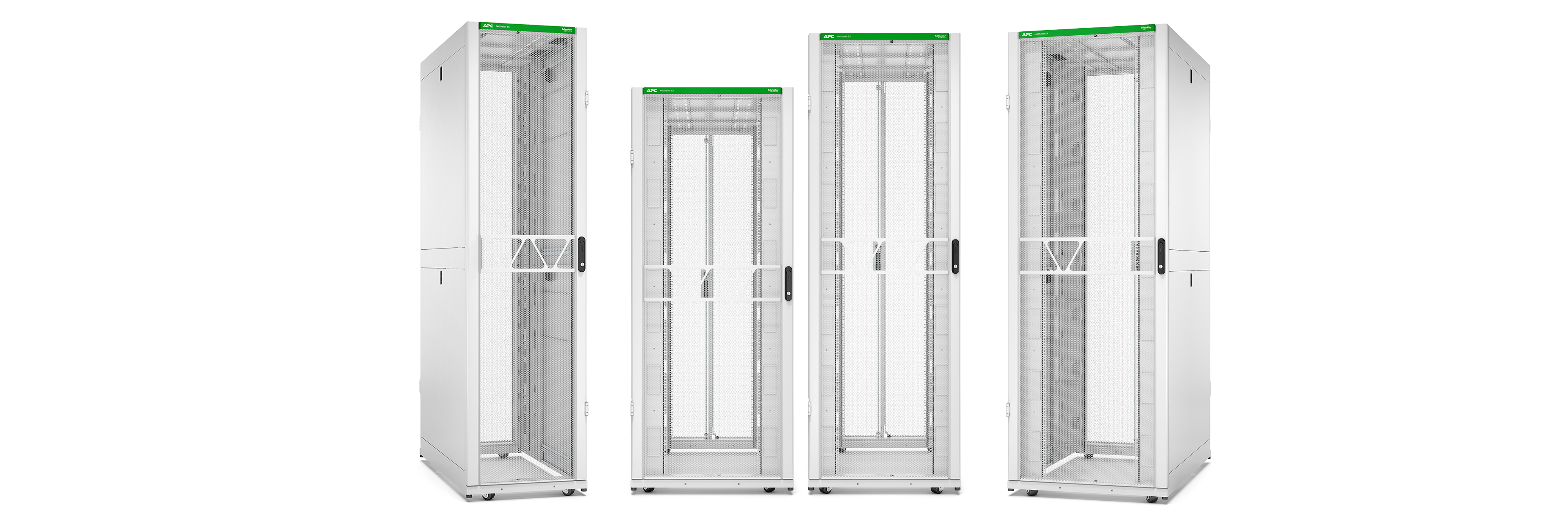Product
Data Centres
Infrastructure
News
Product
UPS & Power Distribution
Vertiv and ZincFive collaborate to deliver safe energy storage
Vertiv, a global provider of critical digital infrastructure and continuity solutions, and ZincFive, a provider of nickel-zinc (NiZn) battery-based products for immediate power applications, today announced that Vertiv will add the ZincFive BC Series uninterruptible power supply (UPS) Battery Cabinets to its portfolio of battery systems available for data centre backup power.
The safe and recyclable nickel-zinc batteries are compatible with select large and medium Vertiv UPS systems, including the recently launched Vertiv Trinergy, as a source of backup energy storage, complementing the company’s commitment to enable customers to minimise the environmental footprint of their data centre sites. The ZincFive BC Series UPS Battery Cabinets are now available from Vertiv in the EMEA region.
ZincFive’s BC Series UPS Battery Cabinets are reportedly the first nickel-zinc battery energy storage solution with backward and forward compatibility with megawatt class UPS. The BC Series offers the smallest footprint in the industry compared to VRLA and Lithium-Ion, and minimal maintenance requirements. The NiZn chemistry provides reliable operation, with the battery strings remaining conductive, even with weak or depleted cells. In addition, according to a study performed by Boundless Impact and commissioned by ZincFive, ZincFive’s NiZn batteries have a significantly lower end-to-end environmental impact than lead-acid and lithium batteries, as validated by expert third-party analysis.
ZincFive's CEO and Co-Founder, Tim Hysell, comments, "Our relentless commitment to innovation shines through our powerful, safe, and reliable nickel-zinc battery technology. The BC Series represents an ideal solution to meet the evolving demands of data centres, both today and in the future. Furthermore, the importance of sustainability in data centre backup battery systems is on the rise, aligning perfectly with the shared values of ZincFive, our partners, and our customers. We are dedicated to minimising carbon emissions and operational expenses without compromising on safety or performance."
Milind Paranjape, Vertiv's Senior Director of Energy Storage, adds, "Vertiv and ZincFive want to enable reliable and efficiently operated data centres around the world, providing greater access to data, with less waste and greater energy efficiency. Vertiv has already deployed the ZincFive product at several sites for major data centre companies.”
Milind also said the technology is an excellent solution for customers faced with challenges with local Authorities Having Jurisdiction (AHJs) regarding National Fire Protection Association (NFPA) standards and the International Fire Code (IFC).
For more from Vertiv, click here.
Simon Rowley - 16 July 2024
Data Centres
Infrastructure
News
Product
UPS & Power Distribution
Vertiv unveils next-generation Trinergy UPS
As global electricity demand from data centres is expected to double by 2026 – largely driven by computing and cooling requirements from AI and HPC (high-performance computing) – it is crucial to have a robust backup power solution to provide continuous availability of the GPUs and CPUs that run AI compute.
To address these challenges, Vertiv, a global provider of critical digital infrastructure and continuity solutions, today introduced Vertiv Trinergy, an uninterruptible power supply (UPS) engineered to handle the fluctuating load demands of data centres, and Vertiv PowerNexus, an integrated solution that provides space-saving close coupling of the UPS and system switchgear. Both solutions are available globally, with the Vertiv Trinergy UPS being available in 1500, 2000, and 2500 kVA capacities.
Vertiv calculates that Vertiv Trinergy exceeds Tier IV data centre power chain expected availability, with 99.9999998% projected uptime compared to 99.9994% – a difference between 30 seconds of downtime in 10 years for Vertiv Trinergy, compared to eight hours in 10 years as expected for the Tier IV data centre power chain. The system boosts resilience with extended backup time configurations and its innovative self-isolating core design, with modular architecture that features 500kW physically segregated cores. Each core includes the components of an online UPS: inverter, rectifier, booster/charger, and dedicated, segregated controls, allowing each core to operate independently, providing reliable uninterrupted power delivery even during maintenance.
"High-capacity power in a highly reliable system design is critical for data-intensive AI and HPC applications," states Kyle Keeper, SVP of Power Management Global Business unit at Vertiv. "Leveraging over 40 years of innovation, Vertiv Trinergy UPS offers the resilience essential for operations to become future-ready and to support AI loads. It delivers the flexibility required to adapt to various AI applications and is designed to integrate seamlessly with different prime and backup power sources, lithium-ion and nickel-zinc batteries, and alternative distributed energy sources, including fuel cells and long duration batteries (BESS)."
Vertiv Trinergy scales the concept of modularity up to all levels of the UPS architecture. Building blocks can be combined to fit different deployment types, achieving considerable space savings with its compact footprint. It streamlines power distribution through a single connection point, cutting down the necessity for numerous cables, flanges, bus ducts, and switchgear connections for UPS outputs.
Vertiv Trinergy footprint is further maximised when integrated with Vertiv PowerBoard Switchgear as part of the new Vertiv PowerNexus solution, close coupled into a single block connected by internal busbars. This integration also reduces cabling materials, installation time, and installation labour costs. The Vertiv PowerNexus is also available integrated onsite, as a power skid or integrated into an enclosure, providing flexibility to meet specific site needs. Vertiv PowerNexus integration is completed at the factory, saving installation time at the site. The integrated Vertiv EPMS (energy and power monitoring system) with onboard energy monitoring makes the system safer, more reliable and more operable out of the box by increasing visibility and reducing the number of interconnections.
The UPS may be supported by the Vertiv project and lifecycle services portfolio, which includes a new suite of data enabled services, including Vertiv LIFE advanced incident management and condition-based maintenance analytics and health scores.
Vertiv Trinergy delivers an outstanding double conversion efficiency of up to 97.1%, which further increases up to 99% with the Dynamic Online mode, reducing operating costs and energy dissipation. This significantly minimises the consumption of the cooling system, enabling an overall TCO reduction and shorter payback time.
The UPS can provide additional energy saving, as well as cost saving and revenue generation, by leveraging the Dynamic Grid Support feature, which allows the UPS to participate in demand management and other grid services, where available.
With its improved continuous duty booster operation, the UPS is capable of running from a DC source, even at full load, for an indefinite amount of time. The UPS is also compatible with Vertiv DynaFlex Battery Energy Storage System (BESS), which can leverage alternative energy sources for backup or primary power as part of a bring your own power (BYOP) strategy. The replacement of diesel generators as backup power can contribute to a lower mean time to repair (MTTR), and contributes to decarbonisation.
For more from Vertiv, click here.
Simon Rowley - 9 July 2024
Data Centres
News
Product
New Eviden server set to boost application performance
Eviden, the Atos Group business providing digital, cloud, big data and security innovations, has announced the launch of its new Escala E1-1000 server.
The most compact Power10 server ever created, the E1-1000 server has been engineered to optimise data centre space and run workloads at the edge, whilst maintaining the performance, security, and reliability of an enterprise server. Secured end-to-end, it delivers three times more performance per core compared to previous generations, making it ideal for business-critical workloads and AI acceleration.
The E1-1000 is the latest in Eviden’s range of Escala servers, each featuring the Power10 processor. This new server enables businesses to reduce their IT footprint by up to 75%. Featured as a half-wide 2U rack or in a smaller tower chassis format (54% smaller than E2-1000), it enhances businesses’ IT footprint - and with Eviden High Availability software it offers new opportunities and cost-effective solutions for clients looking for business continuity or for expanding applications from core to cloud and at the edge.
Based on the Power10 chip accelerators (four MMA engines / core and eight SIMD engine / core), these CPUs provide an effective solution for AI inferencing at the edge reducing latency, thereby improving AI model performance without the costly expense, maintenance, or noise disturbance associated with GPUs.
In addition, the Escala E1-1000 is a cloud-ready server, ideal for businesses looking to deploy a new cloud infrastructure, with agility, automation and security as key pillars. Multiple virtual servers can run on a single physical server leading to better resource utilisation and reduced energy consumption. The Escala E1-1000 also has a built-in advanced thermal and power management, and together with its energy-efficient design, it enables businesses to reduce energy consumption by up to 75%.
“Companies are swiftly evolving their conventional data centre infrastructure to quickly meet business expansion needs and need to minimise both capital and operational costs,” says Charles-Philippe Gaudron, Group VP, Head of Business Computing, Big Data & Security at Eviden, Atos Group. “The new Escala server answers this need. Available in a rack or tower format, businesses can now enhance their space outside the traditional data centre and run their core workloads and AI applications at optimum speed.”
The E1-1000 server is now available to order and will be on the market from mid-July 2024.
Simon Rowley - 28 June 2024
Cooling
Data Centres
News
Product
New Danfoss connector for liquid cooling applications
Danfoss Power Solutions has launched a Blind Mate Quick Connector for data centre liquid cooling applications.
Compliant with soon-to-be-released Open Compute Project Open Rack V3 specifications, the Danfoss Hansen BMQC simplifies installation and maintenance of inner rack servers while increasing reliability and efficiency.
The BMQC enables blind connection of the server chassis to the manifold at the rear of the rack, providing faster and easier installation and maintenance in inaccessible or non-visible locations. With its patented self-alignment design, the BMQC compensates for angular and radial misalignment of up to 5mm and 2.7 degrees, enabling simple and secure connections.
The Danfoss Hansen BMQC also offers a highly reliable design, the company states. The coupling is manufactured from corrosion-resistant 303 stainless steel and the seal material is EPDM rubber, providing broad fluid compatibility and a long lifetime with minimal maintenance requirements. In addition, Danfoss performs helium leak testing on every BMQC to ensure 100% leak-free operation.
Amanda Bryant, Product Manager at Danfoss Power Solutions, comments, “As a member of the Open Compute Project community, Danfoss is helping set the industry standard for data centre liquid cooling. Our rigorous product design and testing capabilities are raising the bar for component performance, quality, and reliability. Highly critical applications like data centre liquid cooling require 100% uptime and leak-free operation, and our complete liquid cooling portfolio is designed to meet this demand, making Danfoss a strong system solution partner for data centre owners.”
With its high flow rate and low pressure drop, the BMQC improves system efficiency. This reduces the power consumption of the data centre rack, thereby reducing operational costs. Furthermore, the BMQC can be connected and disconnected under pressure without the risk of air entering the system. This eliminates the need to depressurise the entire system, minimising downtime.
The Danfoss Hansen BMQC features a working pressure of 2.4 bar (35 psi), a rated flow of 6 litres per minute (1.6 gallons per minute), and maximum flow rate of 10 lpm (2.6 gpm). It has a pressure drop of 0.15 bar (2.3 psi) at 6 lpm (1.6 gpm). It is available in a 5mm size and is interchangeable with other OCP Open Rack V3 blind mate quick couplings.
For more from Danfoss, click here.
Simon Rowley - 27 June 2024
Data
Data Centres
Infrastructure
News
Product
Software & Applications
R&M introduces latest version of its DCIM software
R&M, a globally active developer and provider of high-end infrastructure solutions for data and communications networks, is now offering Release 5 of the DCIM software, inteliPhy net.
With Release 5, inteliPhy net is turning into a digital architect for data centres. Computer rooms can be flexibly designed according to the demand, application, size, and category of the data centre. Planners can position the infrastructure modules intuitively on an arbitrary floor plan using drag-and-drop, and inteliPhy net enables detailed 2D and 3D visualisations that are also suitable for project presentations.
With inteliPhy net, it is possible to insert, structure and move racks, rack rows and enclosures with just a few clicks, R&M tells us. Patch panels, PDUs, cable ducts and pre-terminated trunk cables can be added, adapted and connected virtually just as quickly. The software finds optimal routes for the trunk cables and calculates the cable lengths. inteliPhy net contains an extensive library of templates for the entire infrastructure, such as racks, patch panels, cables and power supply. Models for active devices with data on weight, size, ports, slots, feed connections, performance and consumption are also included. Users can configure metamodels and save them for future planning.
During planning, inteliPhy net generates an inventory list that can be used directly for cost calculations and orders. The planning process results in a database with a digital twin of the computer room. It serves as the basis for the entire Data Centre Infrastructure Management (DCIM), which is the main function of inteliPhy net.
R&M also now offers ready-made KPI reports with zero-touch configuration for inteliPhy net. Users can link the reports with environmental, monitoring, infrastructure, and operating data to monitor the efficiency of the data centre. Customisable dashboards and automated KPI analyses help them to regulate power consumption and temperatures more precisely, and to utilise resources.
Another new feature is the interaction of inteliPhy net with a focus on the savings in packaging service from R&M. Customers can, for example, configure Netscale 48 patch panels individually with inteliPhy net. R&M assembles the patch panels completely ready for installation and delivers them in single packaging. The concept saves a considerable amount of individual packaging for small parts. This reduces raw material consumption, waste and the time required for installation.
For more from R&M, click here.
Simon Rowley - 14 June 2024
Data
News
Product
Security
Acronis expands security portfolio with new XDR offering
Acronis, a global leader in cybersecurity and data protection, has introduced Acronis XDR, the newest addition to the company’s security solution portfolio.
Designed to be easy to deploy, manage, and maintain, Acronis XDR expands on the current endpoint detection and response (EDR) offering and delivers complete natively integrated, highly efficient cybersecurity with data protection, endpoint management, and automated recovery specifically built for managed service providers (MSPs).
Cyberattacks have become increasingly sophisticated due to cybercriminals deploying AI and attack surfaces expanding, allowing businesses to be more vulnerable to data breaches and malware. To protect their customers, MSPs who offer security services commonly only have a choice of complex tools with insufficient, incomplete protection that are expensive and time-consuming to deploy and maintain. As a direct response to these challenges, Acronis XDR seeks to provide complete protection without high costs and added complexity.
“Acronis makes a compelling entrance into XDR,” notes Chris Kissel, Research Vice-President at IDC. “Acronis has provided an endpoint protection platform for the better part of a year. The company has extended its XDR stack mapping alerts to Mitre Attack and offer cloud correlation detections. Importantly, its platform supports multitenancy, and the dashboard provides intuitive visualisations.”
Key features and benefits of Acronis XDR include:
• Native integration across cybersecurity, data protection, and endpoint management. The product is designed to protect vulnerable attack surfaces, enabling business continuity.• High efficiency, with the ability to easily launch, manage, scale, and deliver security services. It also includes AI-based incident analysis and single-click response for swift investigation and response.• Built for MSPs, including a single agent and console for all services, and a customisable platform to integrate additional tools into a unified technology stack.
“It is imperative that MSPs provide reliable cybersecurity to customers with diverse IT environments and constrained budgets,” says Gaidar Magdanurov, President at Acronis. “Acronis XDR enables MSPs to offer top-notch security without the complexity and significant overhead of traditional non-integrated tools. This is achieved in several ways, including AI-assisted capabilities within the Acronis solution that helps MSPs provide the utmost cybersecurity - even if an MSP only has limited cybersecurity expertise.”
Earlier this year, the company released Acronis MDR powered by Novacoast, a simple, effective, and advanced endpoint security service built for MSPs with native integration of data protection to deliver business resilience. Acronis MDR is a service offering used with the Acronis EDR solution focused on endpoint protection platform (EPP) to provide passive endpoint protection. The addition of Acronis MDR amplifies MSP’s security capabilities without the need for large security resources or added investments.
The introduction of Acronis MDR and XDR follows a string of security-related offerings and solutions from Acronis, building on the company's EDR offering released in May 2023. Acronis security solutions leverage AI-based innovations and native integrations, which lower complexity and provide complete security in the easiest and most efficient way. With a comprehensive security portfolio from Acronis, MSPs can now offer complete cybersecurity to their customers and scale operations to grow their business.
For more from Acronis, click here.
Simon Rowley - 13 June 2024
Infrastructure
News
Product
UPS & Power Distribution
Eaton announces launch of 5P Gen 2 UPS
Intelligent power management company, Eaton, has announced the launch of the Eaton 5P Gen 2 UPS, a compact and more efficient power solution for edge and IT needs.
Delivering more output, security and control than any other device in its class, this new product range also enables fleet management, remote UPS setting and remote firmware upgrades.
The 5P Gen 2 has enhanced power capability and provides up to 1350W, which is 22% more than its predecessor and 33% more than comparable models available on the market, making it ideal for protecting a wide range of applications. Its intelligent design ensures both stable performance and energy savings, while advanced load segment control prioritises critical equipment and optimises battery runtime.
This UPS model features the Eaton ABM+ Advanced Battery Management technology, which extends battery life by up to 50% and allows for accurate battery life prediction and timely replacement alerts powered by machine learning. It also comes with hot-swappable batteries and an intuitive battery replacement wizard via a built-in graphical LCD.
Eaton’s Intelligent Power Manager (IPM2) and Distributed IT Performance Management (DITPM) software enable remote monitoring and management of IT infrastructure, even in hard-to-reach locations, including secure device configuration and firmware updates. The Eaton 5P Gen 2 UPS, together with the cybersecure Gigabit Network Card (included in the Netpack versions), meets stringent cybersecurity standards. Moreover, Eaton’s Brightlayer Software Suite is available for seamless integration with virtualisation environments, ensuring continuous service and data integrity.
Whether customers opt for the compact 1U rack or the tower option, the Eaton 5P Gen 2 UPS fits all space requirements, making it compatible with a variety of setups.
For more from Eaton, click here.
Simon Rowley - 12 June 2024
News
Product
Liquid-cooled server components put to the test
Efficient cooling of server racks (colocation) is crucial for data centres in order to ensure the performance and longevity of the hardware. Liquid-cooled systems are becoming increasingly important in this respect, and as a result, German organisation Poppe + Potthoff Maschinenbau (PPM) is developing test benches to examine and optimise the quality of cooling components and systems.
According to current forecasts by the International Energy Agency (IEA), data centres will consume more than 800 terawatt hours of energy worldwide by 2026 - more than twice as much as in 2022. Liquid cooling systems help to improve power usage effectiveness (PUE). They are up to 40% more efficient than conventional air cooling and make a significant contribution to reducing energy consumption and costs.
DLC systems are considered to be particularly efficient. The coolant is in direct contact with heat-generating components in the server rack, which ensures very effective heat dissipation. This method enables high-density data centres, as DLC systems are very compact. As they can cope with higher temperatures than air cooling, fewer fans are required. This not only reduces power consumption and costs, but also noise pollution.
To prevent damage caused by leaks, all media-carrying components of the DLC system must meet the highest requirements in terms of strength and tightness - and also with changing pressures and temperatures. These include the coolant distribution units (CDU), connectors, valves, lines and the cooling plates, inside which the coolant circulates through microchannels. These are installed directly above the heat-producing components such as CPUs and GPUs.
To test the mechanical strength and tightness of DLC components and systems, Poppe + Potthoff Maschinenbau offers test benches for burst and leak tests up to 70 bar (1100 psi), as well as dynamic pressure pulsation tests of up to 20 bar (290 psi). Higher pressures and water hammer tests can also be realised. With sinusoidal and trapezoidal curves in frequencies of up to 2 Hz, all operating conditions can be comprehensively simulated over the service life.
Testing is carried out with water-glycol emulsions or other coolants such as PG25. The media and ambient temperatures in the temperature-controlled test chambers usually vary between -20°C and +90°C (-4°F to +194°F). The simulation of real operating conditions in PPM's test benches makes it possible to minimise failure risks and costs and to ensure optimum performance of all components of the cooling system in interaction.
Simon Rowley - 12 June 2024
Cooling
Data Centres
IT
News
Product
Schneider reveals data centre White Space portfolio
Schneider Electric, the leader in digital transformation of energy management and automation, today unveiled its revamped data centre White Space portfolio, where racks and IT equipment sit within a data centre.
This new portfolio includes the second generation of NetShelter SX Enclosures (NetShelter SX Gen2), new NetShelter Aisle Containment, and a future update to the NetShelter Rack PDU Advanced, designed to meet the evolving needs of modern data centres - particularly those handling high-density applications and AI workloads, as well as regulatory requirements like the European Energy Efficiency Directive (EED).
The NetShelter SX Gen2 enclosures are specifically engineered to support the demands of contemporary data centres. These new racks can support up to 25% more weight than previous models, handling approximately 4,000 pounds (1,814 kilograms), which is essential for accommodating the heavier, denser equipment associated with AI and high-performance computing.
Enhanced perforation in the doors increases airflow, vital for cooling high-density server configurations, and the racks offer more space and better cable management options for larger, more complex server setups.
With security of physical equipment remaining an important requirement, the enclosures feature all-steel construction and three -point locking systems to improve data centre protection.
The NetShelter SX Gen2 racks reduce their overall climate change impact by around 3.3% per rack and are designed to be highly recyclable, with approximately 97% of the rack being recyclable. These racks are available in standard sizes of 42U, 45U, and 48U along with wide, extra-wide and deep models.
“Our NetShelter SX Gen2 enclosures are a leap forward in addressing the critical requirements of high-density applications,” says Elliott Turek, Director of Category Management, Secure Power Division, Schneider Electric. “With enhanced weight support, airflow management, and physical security, we are enabling our customers to optimise their data centre operations while also advancing sustainability.”
Advanced cooling and flexibility with NetShelter Aisle Containment
The latest NetShelter Aisle Containment can achieve up to 20% more cooling capacity. This is crucial for managing the heat generated by AI servers and other high-density applications. The system incorporates an air flow controller that automates fan speed, reducing fan energy consumption by up to 40% compared to traditional passive cooling systems.
The vendor neutral containment systems provide greater flexibility and speed of setup for data centre operators, allowing for easier integration and adaptation to existing builds. The new design also simplifies installation and field modifications, while reducing energy expenses by between 5 and 10%.
“Containment remains paramount in today's high-density data centres," Elliott notes. "Even in liquid cooled applications, air heat rejection plays a critical role. Our NetShelter Aisle Containment solutions not only enhance cooling capacity but also offer significant energy savings, aligning with our commitment to sustainability.”
Security and management with NetShelter Rack PDU Advanced and Secure NMC3
The NetShelter Rack PDU Advanced with Secure NMC3 is an updated power distribution unit equipped with advanced security features and enhanced management capabilities. The Secure NMC3 network management card provides robust cybersecurity measures and enables third-party validation for firmware updates for consistent compliance. This support for mass firmware updates significantly reduces the manual effort required to keep the PDUs secure and up-to-date, which is crucial for maintaining security across large deployments.
The PDU is suitable for a range of applications, including those with power requirements up to an including 70kW per rack, making it a versatile solution for various data centre configurations. It includes features that enhance energy efficiency and operational reliability, contributing to the overall sustainability of the data centre.
“Security and efficiency are at the forefront of our advanced PDUs,” Elliott explains. “By integrating expended security and management features, we are ensuring that our customers can maintain secure and efficient operations with ease.”
All products in Schneider Electric’s revamped White Space portfolio are available for quotation and order (Secure NMC3 coming in Q4).
For more from Schneider Electric, click here.
Simon Rowley - 12 June 2024
News
Product
AKCP unveils free upgrade for environmental monitoring systems
AKCP, a manufacturer of professional monitoring solutions, has announced a free upgrade for its sensorProbe+ SP1+ and SP2+ environmental monitoring systems.
The PRO upgrade provides users with extended features ideal for monitoring more complex server rooms and data centres, giving access to thermal cabinet mapping, IPV6, SNMPv3 and VPN communications and user accounts.
The PRO version also includes five free virtual sensors for monitoring third-party devices (via Modbus or SNMP GET). On the SP2+ model, the PRO license also unlocks two further intelligent sensor ports, expanding the unit to a four sensor port system.
The AKCP SP1+ is a compact, robust sensor monitoring device which is ideal for server rooms, wiring closets and other applications where a small number of sensors are needed. It is equipped with a dry contact I/O and an intelligent sensor port, while also featuring a built-in temperature sensor or temperature and humidity sensor on a fixed 5 foot cable, allowing it to be precisely placed where needed. A locking DC power jack secures the power supply, helping to ensure that accidental unplugs do not occur.
The AKCP SP2+ is the big brother of the SP1+, with four intelligent sensor ports, and a built-in buzzer for audible alerts. With the addition of a 4G cellular data modem, the device is ideal for remote sites where primary network communications may be unstable or not available.
Both devices come with a five-year warranty and optional one-year free use of the AKCP Cloud Server for up to five units, as well as having their own graphical user interface if utilised on a closed network.
AKCP's partner for the UK market is Server Room Environments, which provides next day deliveries from stock, support and installation services.
Simon Rowley - 29 May 2024

Head office & Accounts:
Suite 14, 6-8 Revenge Road, Lordswood
Kent ME5 8UD
T: +44 (0)1634 673163
F: +44 (0)1634 673173
